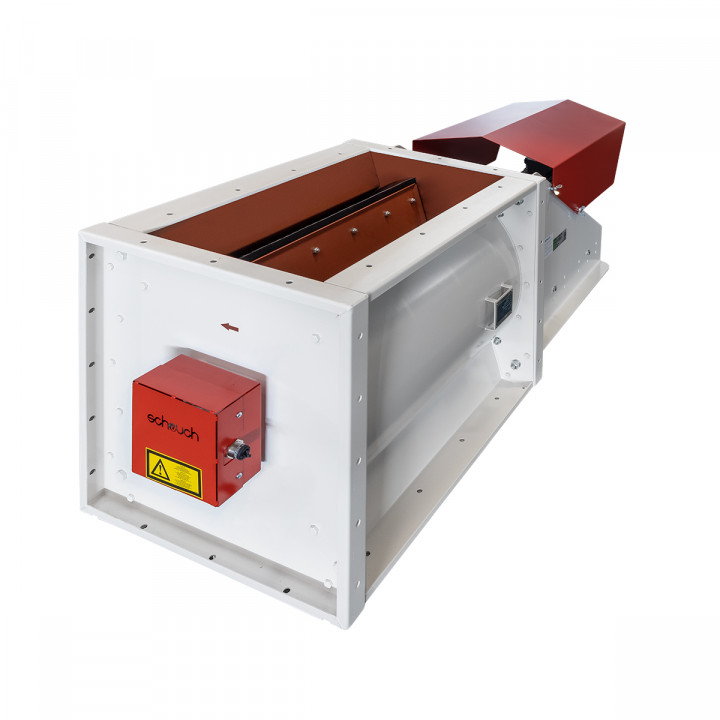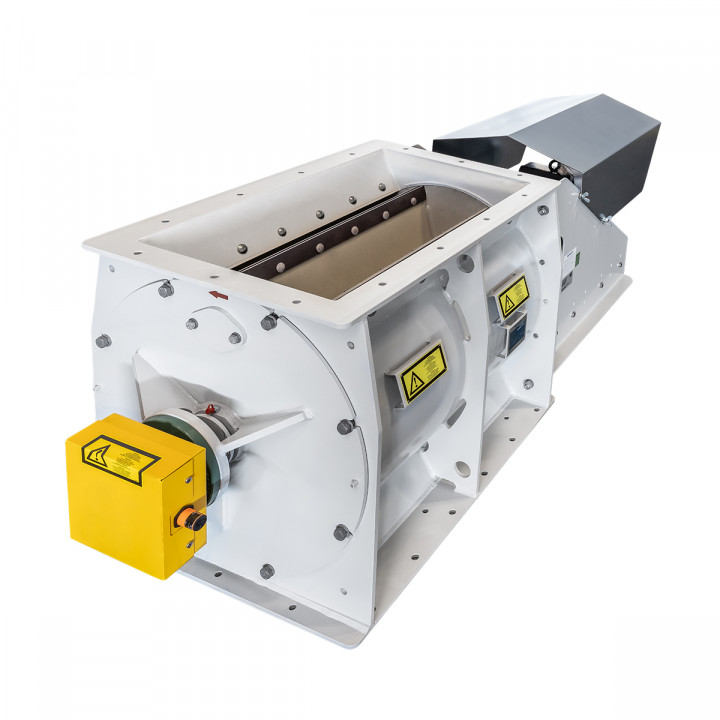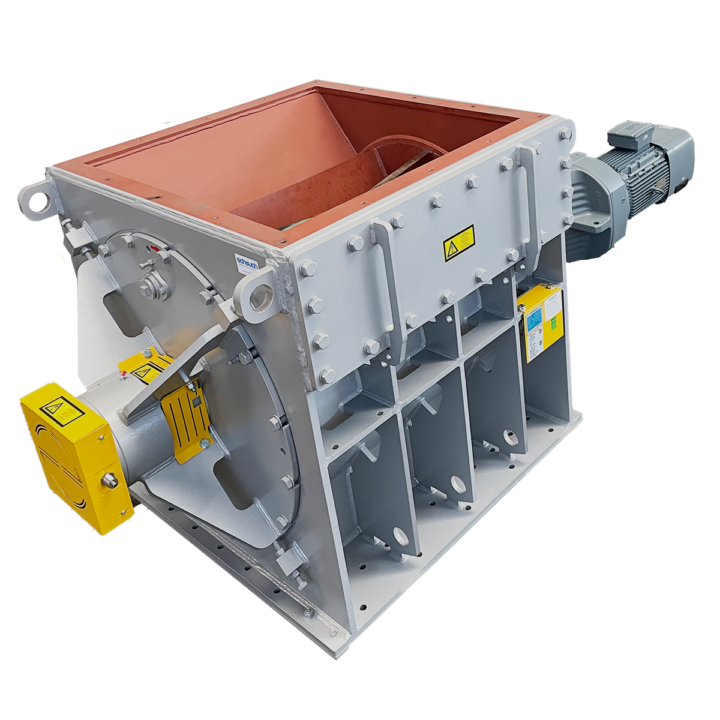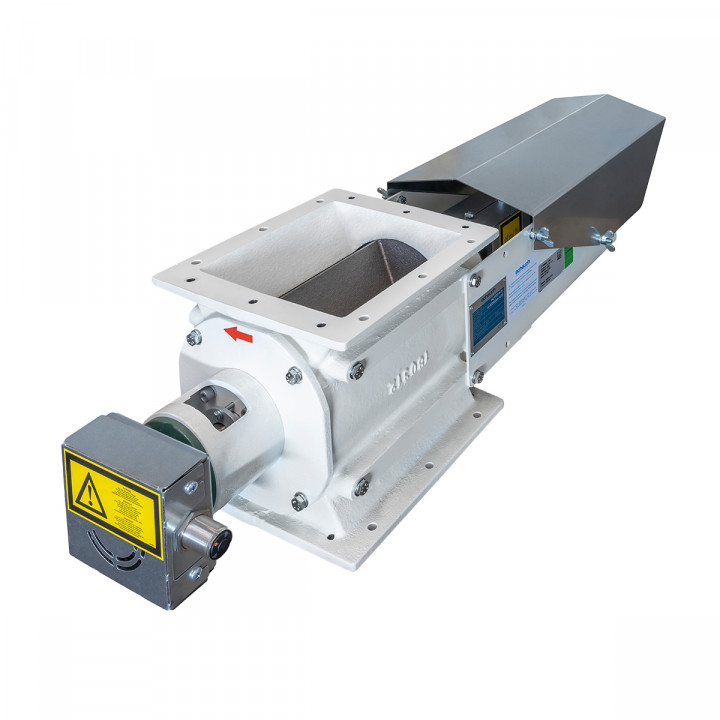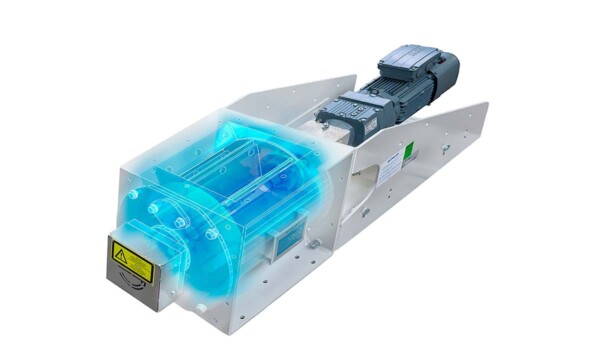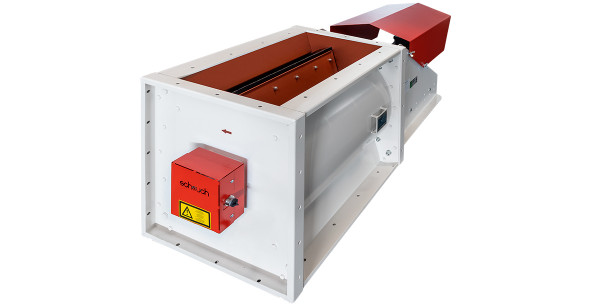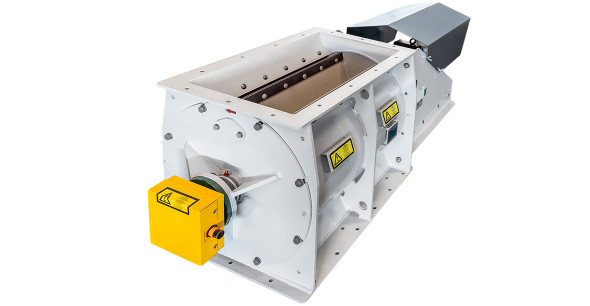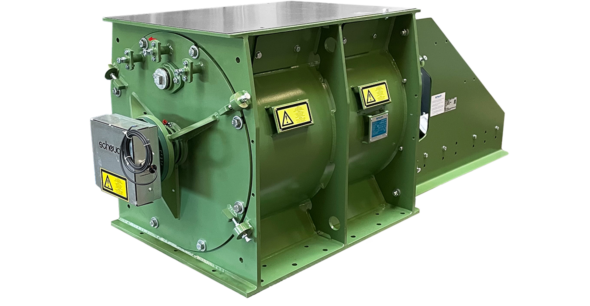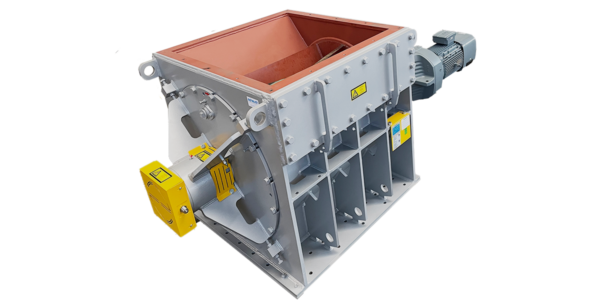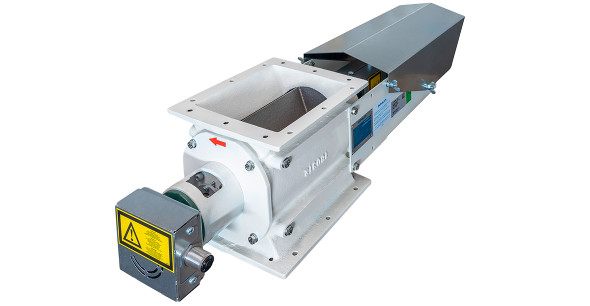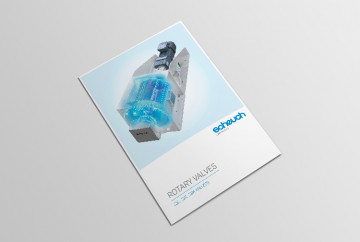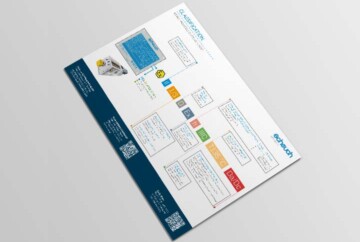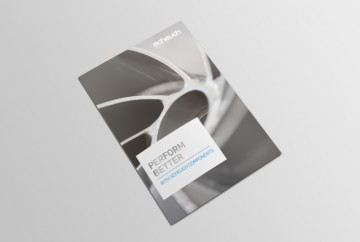Rotary valves
Scheuch COMPONENTS rotary valves – for dosing, feeding and discharging
Used in industrial processes, rotary valves principally perform the tasks of dosing, feeding and discharging granulates and products with a dust-like or fine-grained structure. They provide a safe, efficient and gentle way of handling powders and granulates at a range of different levels. Rotary valves are equally at home in the food industry, chemical companies, plastics production and the minerals industry.
In light of the requirements regarding safety and explosion protection, which represent an ever increasing challenge, our rotary valves are EU type-examined in accordance with Directive 2014/34/EU. They meet category requirements CAT 1, CAT 2 and CAT 3 and are therefore suitable for use in Zone 20, Zone 21 and Zone 22.
Furthermore, our rotary valves have been tested and certified in line with “protective system” requirements. Explosion testing with regard to ignition source safety and flame arresting devices was carried out by notified bodies with European certification.
Standard performance date
Max. differential pressure: 8,000 – 80,000 Pa
Throughput volume: 7.5 – 9,122 m³/h
Specific requirements?
Alongside our standard portfolio, we also work with our customers to develop bespoke solutions.
Please send us your request – we will be happy to help.
Quick Request
Our rotary valves types
Tasks
- discharging
- blocking
- decoupling
- dosing
- feeding
- conveying
Bulk goods
- grainy
- powdered
- finely powdered
- fibrous
- granular
- greasy
Sectors
Areas of application for Scheuch COMPONENTS Rotary valvesWhat kind of structure does a rotary valve have?
The central component of a rotary valve is a rotor located in a casing that is adapted to suit the exact size of the unit. The conveyed material travels through an inlet connected to the casing and reaches a rotor cell, in which it is seamlessly transported onwards before being dosed and transferred to an outlet that is also connected to the casing.
A bearing, a bearing cover and a rotor seal make up the other components of a rotary valve.
What does a rotary valve do?
A rotary valve can take on lots of different jobs, depending on what is required of it, but its main task is to discharge dosed quantities of bulk material that can then move on to further treatment stages.
Rotary valves that are installed under silos and other repositories reduce the pressure that the bulk materials exert on the immediately adjacent components in a transport chain. Their dosing-based method of discharging also takes the strain off trough screw conveyors and other systems, including scales. Not only that, but rotary valves even provide burn back protection in cases where they are used with combustible materials.
What types of rotary valve are available?
Rotary valves come in a variety of designs to suit all kinds of different tasks. Please get in touch if you need any information about the specific features that our products contain – whether you need a small rotary valve or something suitable for handling large volumes, Scheuch COMPONENTS has a solution to suit your requirements.
Our range includes the following types:
rotary valves zss & zss-ck
The ZSS is suitable for the use of non-metallic chips as well as for free-flowing dust with hard and fine graining. The casing is manufactured as a solid welded construction and the casing bore is hard chrome-plated. The adjustable strips of the wear-resistant rotor made from steel can be adapted to the respective goods being conveyed.
The zss-ck is certified for coal dust as a conveyed medium. Due to the smouldering characteristics of coal dust, Scheuch COMPONENTS has adapted the design accordingly. This rotary valve has also been tested as per the 2014/34/EU EC-type standard.
Max. differential pressure: 80,000 Pa
Throughput volume: 25 to 830 m³/h
rotary valves zsm
With a casing manufactured as a solid welded construction in high-strength steel and a rotor made from wear-resistant steel, the ZSM rotary valve is the most robust of the rotary valves. This type is suitable for free-flowing dust and high-volume wood chips. Blades on the inlet and outlet of the valve enable larger pieces of wood present in the goods being conveyed to be chopped off.
Max. differential pressure: 80,000 Pa
Throughput volume: 120 to 2,625 m³/h
rotary valves zsg
The ZSG type is used for free-flowing dust with both hard and fine graining. In the standard design, the casing and full-blade rotor are made from cast iron. Scheuch COMPONENTS offers various strip designs for the rotor depending on the goods being conveyed.
Max. differential pressure: 25,000 Pa
Throughput volume: 7.5 to 15 m³/h
Which kinds of rotary valve are best for which tasks?
The rotary valve you choose will depend on what exactly you need it to do. We’d be delighted to help you find the perfect solution for your application – and whatever you need a rotary valve for, we can deliver it in a range of different sizes to create the perfect match for the speed of your conveying systems.
How long does it take to clean a rotary valve during a batch change?
More and more, today’s businesses need to offer flexibility and accommodate a variety of products. That’s why we’ve designed our rotary valves to make sure they can be cleaned in no time at all – so production can get up and running again quickly after a batch or bulk material has been changed. Every component that requires cleaning is easy to access and quick to deal with, significantly reducing the time spent on cleaning and boosting productivity.

